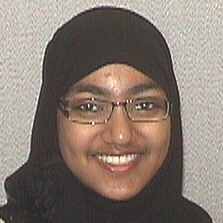Below is a summary of the abstract you submitted. Presenting author(s) is shown in bold.
If any changes need to be made, you can modify the abstract or change the authors.
You can also download a .docx version of this abstract.
If there are any problems, please email Dan at dar78@pitt.edu and he'll take care of them!
This abstract was last modified on May 9, 2016 at 5:25 p.m..

UMBC Phage Hunters isolated, sequenced and annotated phages from two different bacterial species in 2015 – 2016. Streptomyces phage Nanodon was isolated from a volcanic soil sample collected from Kilauea, HI using Streptomyces griseus griseus ATCC 10137™ as a host. This Siphoviridae phage produced clear, variably sized plaques on supplemented nutrient agar, and has a linear genome of 50,082 bp, with 77 protein coding genes and 65.7% GC content. Initial classification of Nanodon as a BD1-cluster phage was supported through phylogenetic analysis of the terminase and portal proteins. Bacillus phage SalinJah was isolated from soil collected in Gyeonggi-do, South Korea and cultivated on Bacillus thuringiensis Berliner DSM 350. SalinJah has a wide host range among B. cereus group spp., though not among other tested Bacillus spp. SalinJah is a Myoviridae with a linear genome of 161,140 bp, 38.7% GC and 291 protein coding genes. SalinJah appears to be a member of the C1 sub-cluster, though differences highlighted by Phamerator and phylogenetic analysis of tape measure protein, tail sheath protein, and DNA polymerase suggest a potential split or sub-sub cluster. For the second year, UMBC Phage Hunters participated in the intercollegiate CACAO competition, this year competing against three other SEA-PHAGES campuses. As part of the competition, UMBC Phage Hunters read nearly 80 papers and submitted a total of 125 GO annotations using primary literature and orthology assessment.


